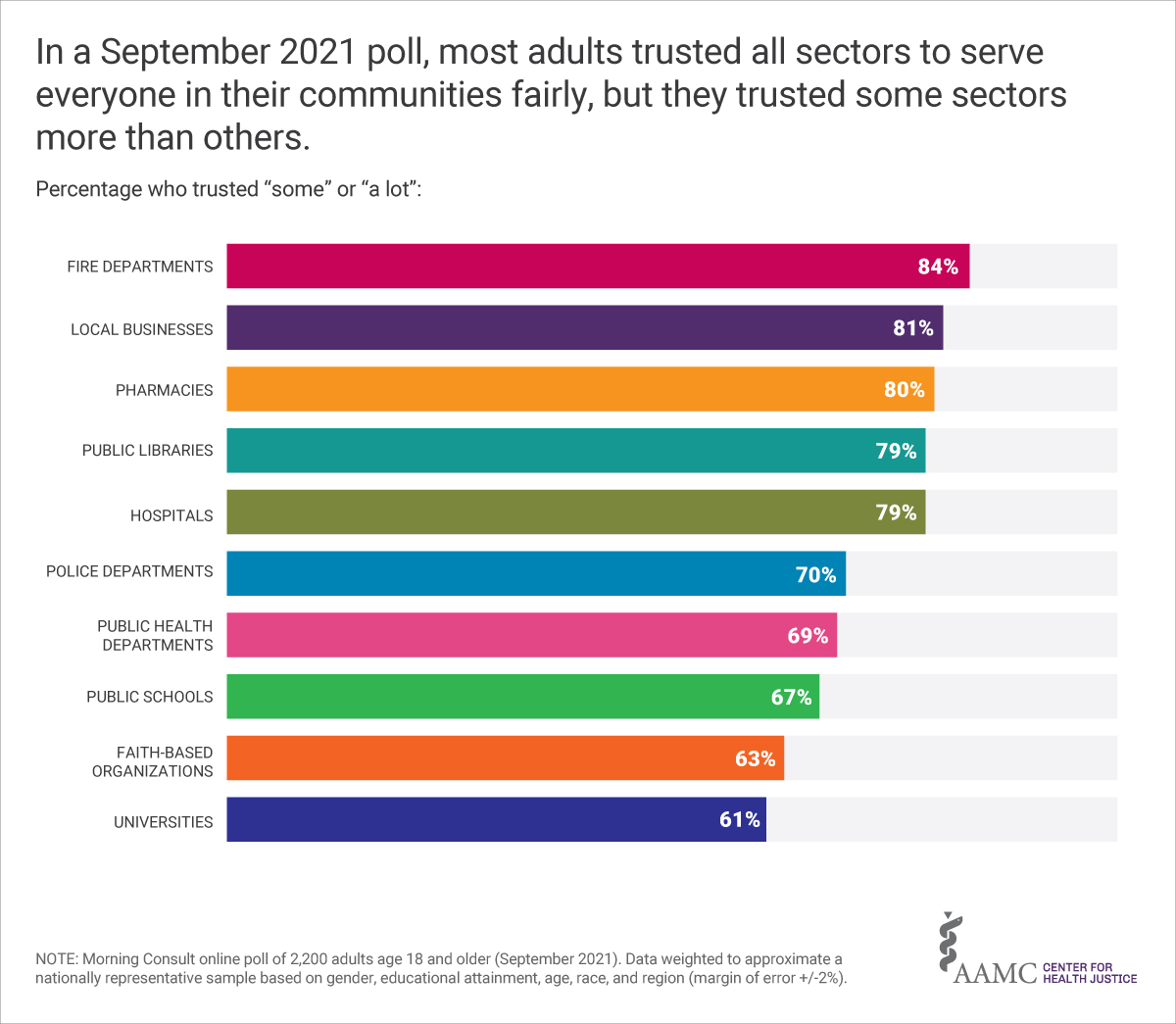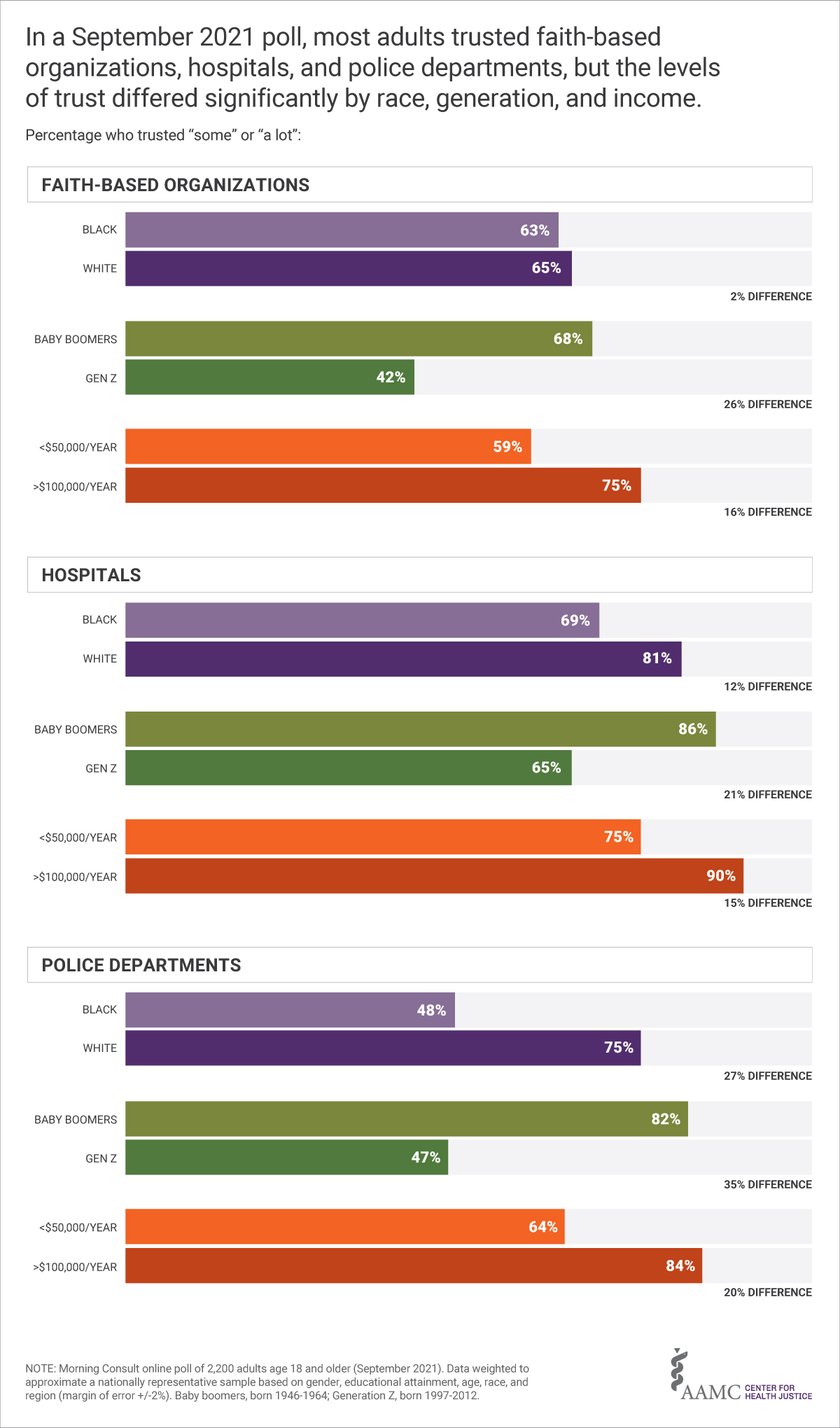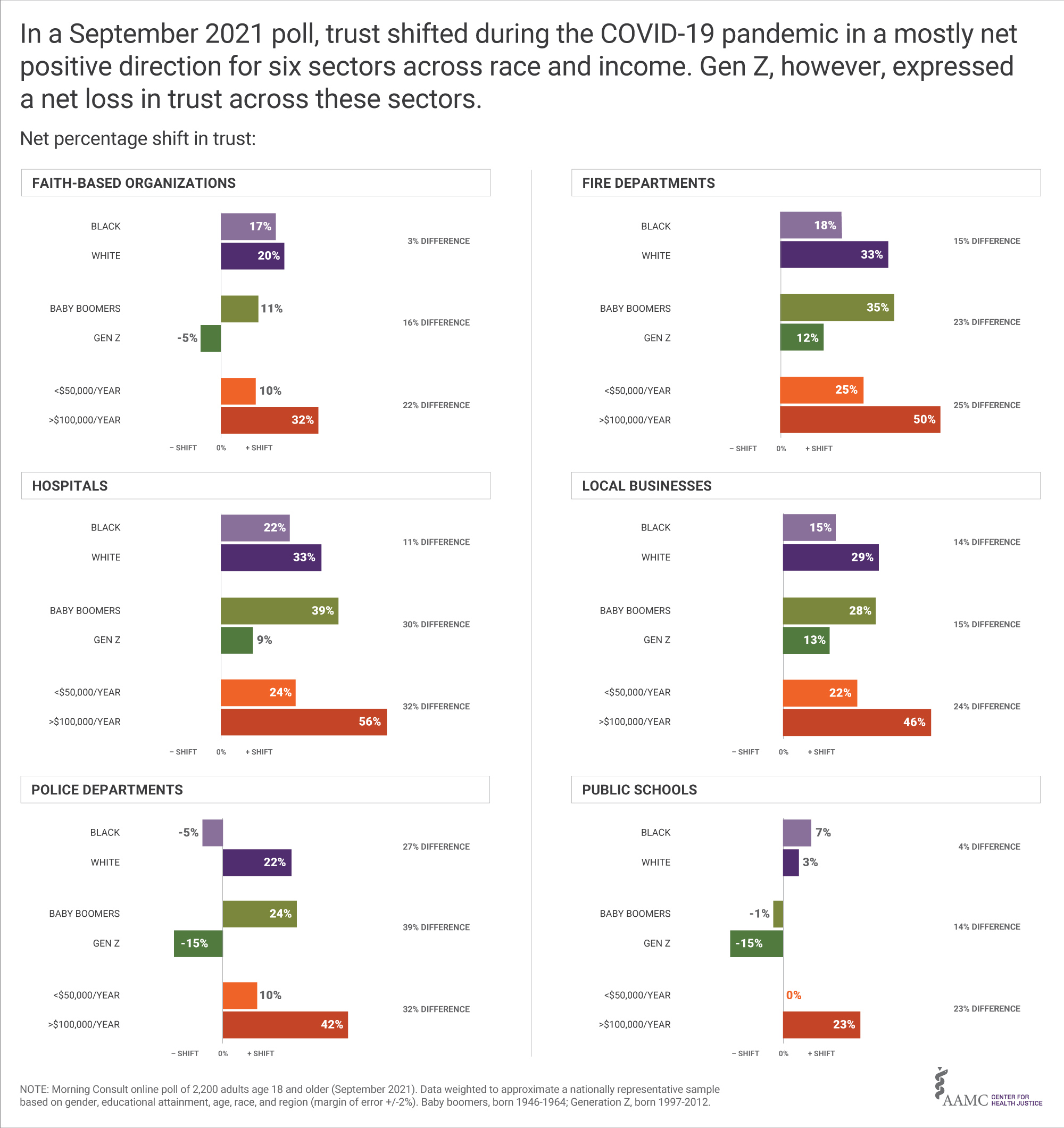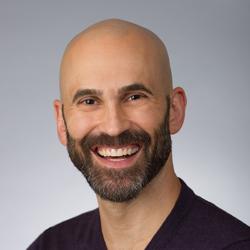With the coronavirus and its variants here to stay, the U.S. vaccination rate hovers stubbornly around 60%. With each new wave, COVID-19 cases spike, and deaths soon follow — almost always more so in the most historically marginalized and resource-deprived neighborhoods and communities. Here in the AAMC’s home of Washington, D.C., almost every single one of those deaths since June has been of a Black resident. Calls for more or better vaccine education are ineffective without a foundation of trust.
In May 2021, the AAMC Center for Health Justice published the Principles of Trustworthiness, a set of guidelines and actions for organizations to use to show they are worthy of their community’s trust. More than one year after the July 2020 interviews with the community members that informed the principles, we polled a nationally representative sample of adults across the United States to gauge their levels of trust in institutions, how that trust has changed over the course of the COVID-19 pandemic, and what organizations from all sectors should do to be seen as trustworthy partners by their communities.
Most people polled overwhelmingly trusted their neighborhood fire departments (84%), businesses (81%), and pharmacies (80%) to treat all people fairly (Fig. 1). Fire departments were the most trusted sector in every age and racial and ethnic group and across all incomes and U.S. geographic regions: urban, suburban, and rural. Access the full tables for data stratified by generation, race/ethnicity, community type, region, and income here.

The answer to the question of who people trust least is more complicated. The more money a person makes, the more likely they were to trust. Those with incomes less than $50,000 were 20 percentage points less likely than those with incomes over $100,000 to say they trusted the police to treat everyone in their community fairly (Fig. 2). There were also racial and ethnic patterns of trust. Hispanic people had more trust across all sectors than Black people. White people had the most trust across all sectors.

The biggest gaps in trust were by generation. While a majority of Baby Boomers trusted all sectors (except public housing), a majority of Gen Z distrusted faith-based organizations, municipal court systems, police departments, public housing, and social service agencies. In fact, the percentage of Gen Z adults who trusted faith-based organizations (42%) is smaller than the percentage of Black adults who trusted police departments (48%).
When asked about how their trust had changed since the start of the pandemic, again the largest differences were by income (Fig. 3). Those whose income was smallest reported greater net losses in trust. Public housing and public schools had the lowest net trust scores for adults with incomes less than $50,000. Net trust across all sectors for Millennials, Gen X, and Baby Boomers overwhelmingly increased. For Gen Z, however, net trust across all sectors decreased over the course of the pandemic, a pattern seen in no other racial, ethnic, regional, or income group in the survey. Even where Gen Z’s trust showed a net increase, it was tepid, reaching only a fraction of the net increases of older generations.

So, what now? Fire departments’ perceived trustworthiness warrants further study to determine what characteristics make them so trustworthy, how other organizations can follow their example, and how best to partner with them to bring needed change to their communities’ health. Health equity-focused interventions should expand outside traditional partnerships when trying to reach a specific community.
When asked open-ended questions about what these sectors could do to earn their trust, respondents’ answers were direct. “For starters, come to us and ask us first,” wrote one person. Others urged organizations to be persistent and consistent and to live up to their own stated goals. “Follow up with action after your talks so that the citizens of our community will see that you mean what you say.” “Take seriously issues of institutional racism and make a good faith effort to change the status quo, not just talk about changing.” But the most touched-upon theme was to tell the truth even — and especially — when people have made mistakes.
“Don’t overpromise or distort things to gain acceptance. Be honest even if it’s less favorable to your agency or self.”
The fact that respondents’ answers mirrored those in the Principles of Trustworthiness and the everyday voices that informed those principles suggests that although the way forward may be different for each city, town, state, and neighborhood, the guiding values are the same. The key to demonstrating trustworthiness and making real progress toward the shared goal of health equity is not an organizational pledge or a new grant — it’s laying the groundwork for long-term relationships, shared resources, and collaborative decision making. As one respondent put it, “Have more positive interactions at times when there is not an emergency.” Only when trust and authentic, bidirectional community relationships are ongoing goals for the organizations that hold structural power will real progress be made down the long path of health justice toward a future of health equity for all.

